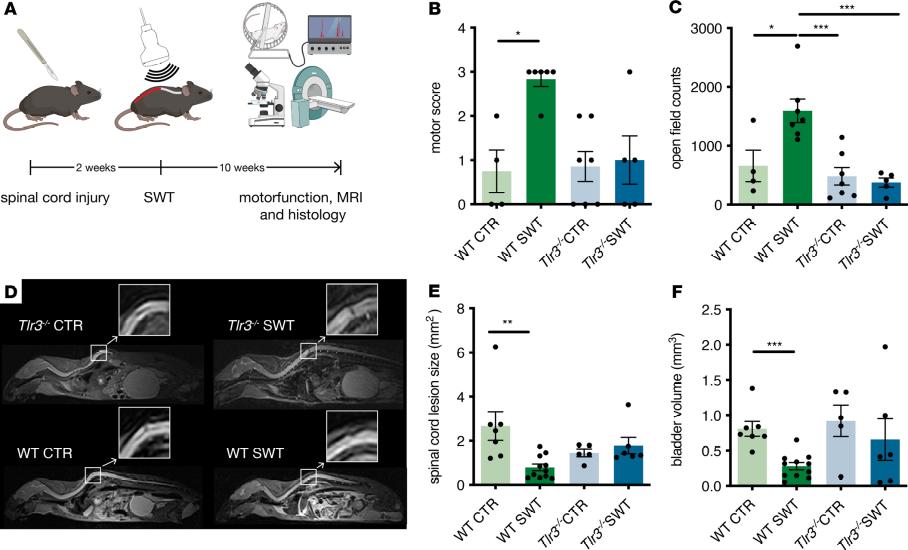Shock Waves Promote Spinal Cord Repair via TLR3
(Gollmann-Tepeköylü et al., 2020. Department of Cardiac Surgery, Medical University of Innsbruck, Austria.)
Abstract
Spinal cord injury (SCI) remains a devastating condition with poor prognosis and very limited treatment options. Affected patients are severely restricted in their daily activities. Shock wave therapy (SWT) has shown potent regenerative properties in bone fractures, wounds, and ischemic myocardium via activation of the innate immune receptor TLR3. Here, we report on the efficacy of SWT for regeneration of SCI. SWT improved motor function and decreased lesion size in WT but not Tlr3-/- mice via inhibition of neuronal degeneration and IL6-dependent recruitment and differentiation of neuronal progenitor cells. Both SWT and TLR3 stimulation enhanced neuronal sprouting and improved neuronal survival, even in human spinal cord cultures. We identified tlr3 as crucial enhancer of spinal cord regeneration in zebrafish. Our findings indicate that TLR3 signaling is involved in neuroprotection and spinal cord repair and suggest that TLR3 stimulation via SWT could become a potent regenerative treatment option. 1
Spark Wave Therapy induces neuroprotection and spinal cord repair.
Improved locomotor function and decreased lesion size after treatment.

